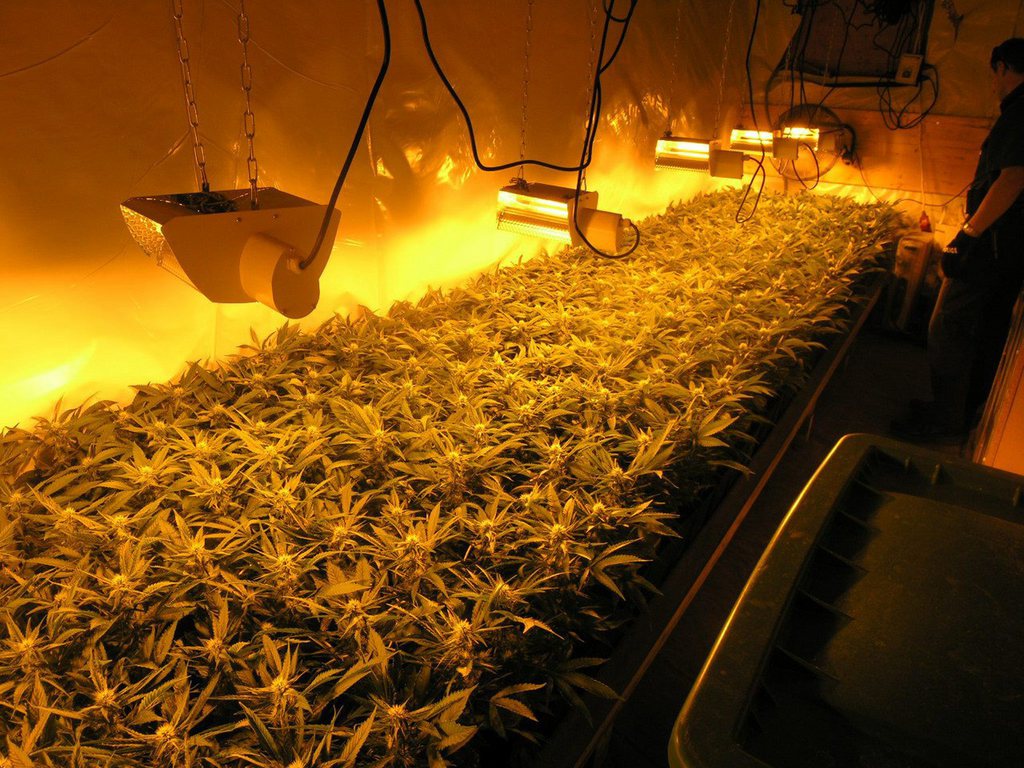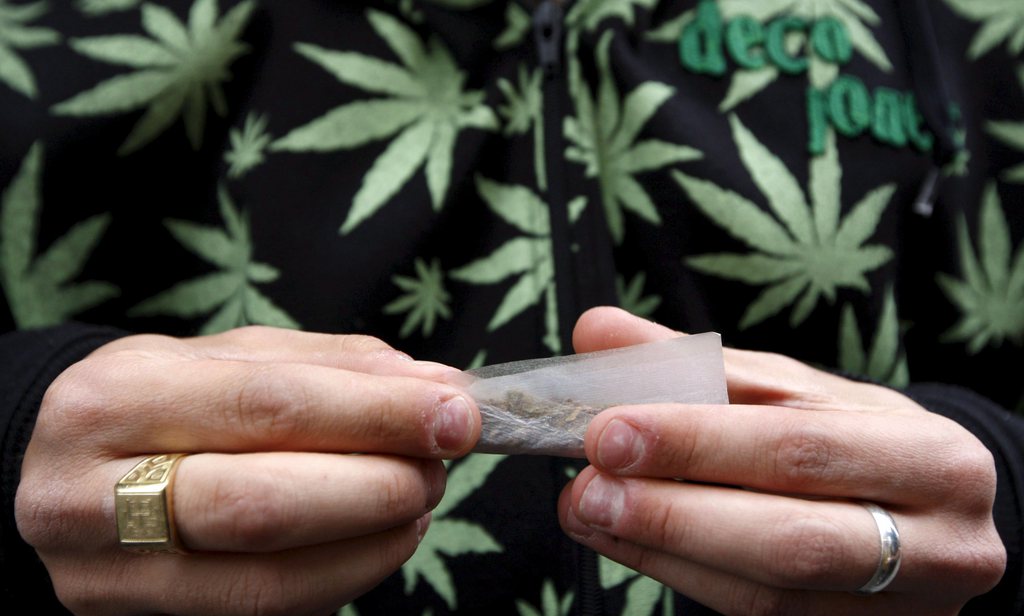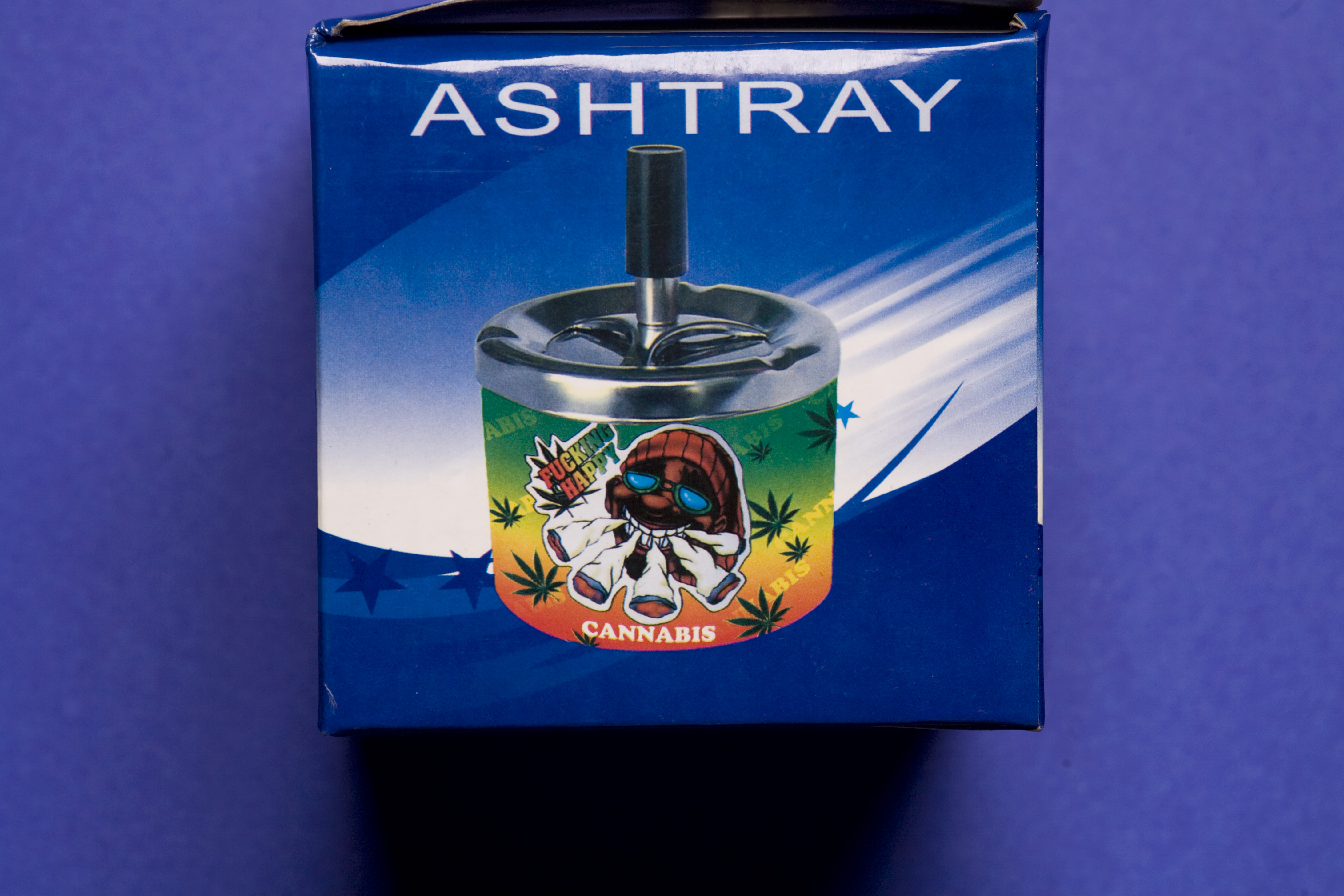“A joint before bed clears the head”

From the outside it looks like every other house on the street. Once inside the front door, there are still no distinctive smells or traces of the thriving marijuana crop growing in the cellar.
Andre* rolls a cigarette. It’s his second within 15 minutes. But these roll-ups only contain tobacco. “Usually I don’t smoke grass during the day,” he tells swissinfo.ch. “I prefer a joint before going to bed, it helps clear the mind.”
André is approaching 50 but started smoking pot “relatively late”, “mainly out of respect for my son, who is now 21”. When he was younger he bought marijuana on the street from different contacts. “You always had to chase after people and you never knew what you’d end up with. And it cost a lot.”
Four years ago he decided to take matters into his own hands. “I found a house that was big enough [in the region of Lausanne]. It would have been impossible to start growing indoors with an apartment.”
His secret garden is hidden in two ‘grow cupboards’ made of black cloth. “Everything I produce is for my own use. I’m not interested in selling,” he says.
He is obviously in favour of legalising cannabis, “but with measures for protecting young people”, as he is aware of the risks it can pose (see sidebar). Over time, he has seen marijuana become stronger.
“When I was young , the rate of THC [tetrahydrocannabinol, the main psychoactive molecule] was around three to seven per cent. But my plants contain 30-35 per cent, which is well above the authorised one per cent rate.”
But smoking stronger grass doesn’t necessarily mean it’s more harmful to his health, according to André. “I smoke fewer joints. It’s like drinking a whisky instead of three beers.”
Money saver
André clubbed together with two friends to buy everything needed to be a serious indoor grower. It was easy finding the lamps, electric pumps, ventilation systems, moisture sensors, soil and, of course, the seeds.
“There are dealers who have all the equipment. They used to even sell cuttings, but that’s no longer allowed. For seeds I go to sources in German-speaking parts of Switzerland or the Netherlands.”
Over time he realised he could find growing materials at gardening shops, four times cheaper. “Cannabis shops are doing a roaring trade. They are always full.”
His indoor plantation is rather modest. Around 30-40 plants, although André knows people who have around 100.
The seeds are genetically engineered and can cost up to SFr17 ($17.2) each. The electricity for the powerful sodium lamps is also expensive.
“A crop takes about three months to grow and costs around SFr1,000,” André said. “I don’t think our large electricity consumption will attract the attention of the power company but it’s true that bigger growers are often caught this way.”
“Like jam”
He says he has saved money since his initial investment of around SFr6,000. With each quarterly harvest, André can produce 500-700 grams of marijuana, which has a street value of up to SFr10,000, or SFr12-15 a gram.
“Taking into account the investment, the cost to us is SFr1-2 a gram, and the plus is that we know what we are smoking,” says André. “I only use organic methods, while the majority of grass sold on the street is chemically treated.”
When it’s harvested, he does offer samples to friends. “It’s a bit like homemade jam. When it’s good, it’s something you like to share.”
According to 2011 estimates by the federal police, there are 100,000-236,000 regular users – who smoke cannabis more than once a month – in Switzerland, and up to 168,000 occasional smokers (who smoke it once a month at most).
André says Swiss home growers produce a good standard of marijuana and “outside Amsterdam, it’s difficult to find such a high quality product”. He taught himself how to grow by reading specialist books and researching on the internet.
The trickiest part of indoor growing is the sensitive conditions required by the plant. The pH level (acidity) of the water, parasites and temperature are among the bigger concerns.
The illegal aspect and the police are less of a worry. “The police could show up here. But as this grass is only for personal use, I don’t think it’s a big risk. But it would be a shame to lose all the equipment,” says André.
Growing attraction
Catching small indoor growers is not a priority for police drug squads, according to Jean-Philippe Pittet, spokesman for Lausanne police. “We only get involved when neighbours call, which happens about once a month.”
Instead police target the large scale producers and criminal networks. The Federal Justice Office has found that organised criminal networks which usually focus on cocaine and heroin are also getting involved in cannabis supply.
With its rising price and low penal risk cannabis production is also attracting more entrepreneurs. However, André, who works in social services, prefers to “stay clean”.
“Many people have asked me to start selling. But that’s not my thing. And I have a good job, I don’t need the extra income.”
* Name known to the writer
Smoking cannabis, with or without tobacco, can affect lung functions, increase the risk of inflammation of respiratory tracts and result in chronic bronchitis and tumours.
Certain studies have shown slight memory loss and reduced ability to concentrate in long-time users.
There have been links found to cannabis use (regular or early) and psychosis and depression.
According to several studies, cannabis also has therapeutic effects. It can for example help ease Aids symptoms and cancer at a terminal phase. Certain substances that it contains could also have a positive effect on asthma and glaucoma treatment.
(Sources: Swiss institute for addiction prevention, World Health Organization)
In Switzerland federal law on narcotics punishes cultivation of cannabis plants for the purpose of extracting the substance, as well as selling, use and possession. Penalties range from fines to three years in jail.
However cannabis can be prescribed for therapeutic means, although this requires authorisation.
Preparation of a very small quantity of drugs for personal use is not a crime.
Cannabis is considered a drug when its main active substance, THC, exceeds 1%.
In the 1990s, several cantons adopted a rather tolerant line. At one time, it was possible to buy marijuana in 130 cannabis shops across the country, mainly in German-speaking parts of Switzerland.
The resulting cannabis tourism to border areas and the publication of studies on the drug’s risk to mental health both boosted scepticism and opposition to its decriminalisation.
In 2008 Swiss voters threw out an initiative advocating cannabis legalisation.
But in June 2012 parliament decided that people possessing a small quantity of cannabis, up to 10 grams, would not be criminal charged but would be issued with a fine.
(Translated by Jessica Dacey)

In compliance with the JTI standards
More: SWI swissinfo.ch certified by the Journalism Trust Initiative



You can find an overview of ongoing debates with our journalists here. Please join us!
If you want to start a conversation about a topic raised in this article or want to report factual errors, email us at english@swissinfo.ch.